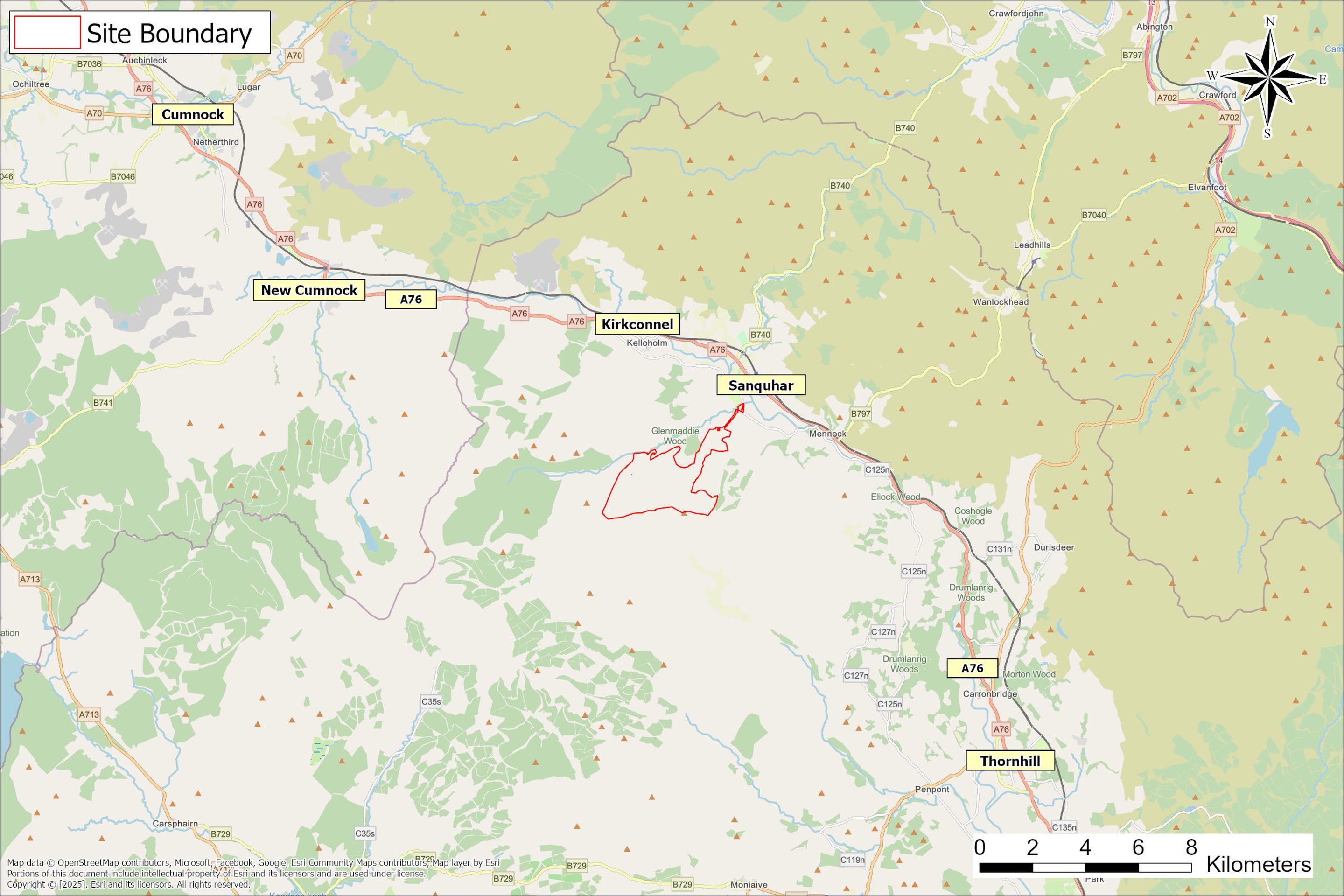Cloud Hill Wind Farm
A project of BayWa r.e. UK Limited
Project Status
Additional Environmental Information (AEI) supporting the Section 36 planning application for Cloud Hill Wind Farm has been submitted to the Scottish Government’s Energy Consents Unit.
The site is close to the existing Whiteside Hill Wind Farm, approximately 4.5 km south of Sanquhar, and 4 km south-east of Kirkconnel, in Dumfries and Galloway.
The AEI, submitted in November 2024 addresses design updates and technical clarifications based on feedback from consultees. Key design changes include
Removal of Turbine 8
Re-siting Turbine 1
New location for substation and battery energy storage system (BESS)
This follows the initial application lodged in August 2023.
As the development exceeds 50 MW, the application will be considered by Scottish Ministers.
About the Project
The Cloud Hill Wind Farm proposal initially included 11 turbines with a maximum tip height of 180m. Following the removal of one turbine, the revised application features 10 turbines at the same maximum height.
The wind farm will be co-located with a battery energy storage system (BESS) and will also include substation, control room, access tracks, a temporary construction compound, and a permanent met mast of up to 100 m.
Site Location
Design Process
The design of the Cloud Hill Wind Farm has evolved significantly through the Environmental Impact Assessment (EIA) scoping process and extensive consultations with local community councils, residents, and environmental organisations throughout 2022 and 2023.
Initially proposed with 14 turbines, the wind farm’s design was refined to include only 11 based on feedback from these consultations. The remaining turbines were repositioned to minimise visibility and environmental impact. Existing onsite access tracks were used to reduce the project’s footprint further.
Following additional feedback after submitting the original 11-turbine application, we further reduced the number of turbines to 10. Input from Dumfries & Galloway Council, RSPB, and SEPA has been instrumental in shaping this updated layout, aligning it closely with environmental and community priorities.

Viewpoint Image Gallery
Community Benefits
BayWa r.e. UK is committed to supporting communities that neighbour our wind farm developments. Our commitment includes an annual community fund, designed to provide a valuable long term, sustainable, and reliable source of income that directly supports local community priorities.
This flexible funding can be applied to a wide range of community needs, from large scale projects to smaller initiatives, as well as both capital investments, and harder to fund revenue activities. Importantly, this private sector funding also has the potential to unlock additional matching funds, enhancing its impact and value to the community.
A community benefit package of £5,000 per installed MW will be offered annually for the life of the Cloud Hill Wind Farm. This will amount to approximately £280,000 per year, index linked, totalling over £9m across the 35-year operation period.
*Calculated using the most recent statistics from DESNZ showing that annual GB average domestic household consumption is 3,239kWh kWh (as of January 2024, updated annually): number of megawatts installed, multiplied by a site specific load factor expressed as a fraction of 1, multiplied by number of hours in a year, divided by average annual domestic electricity consumption expressed in MWh







